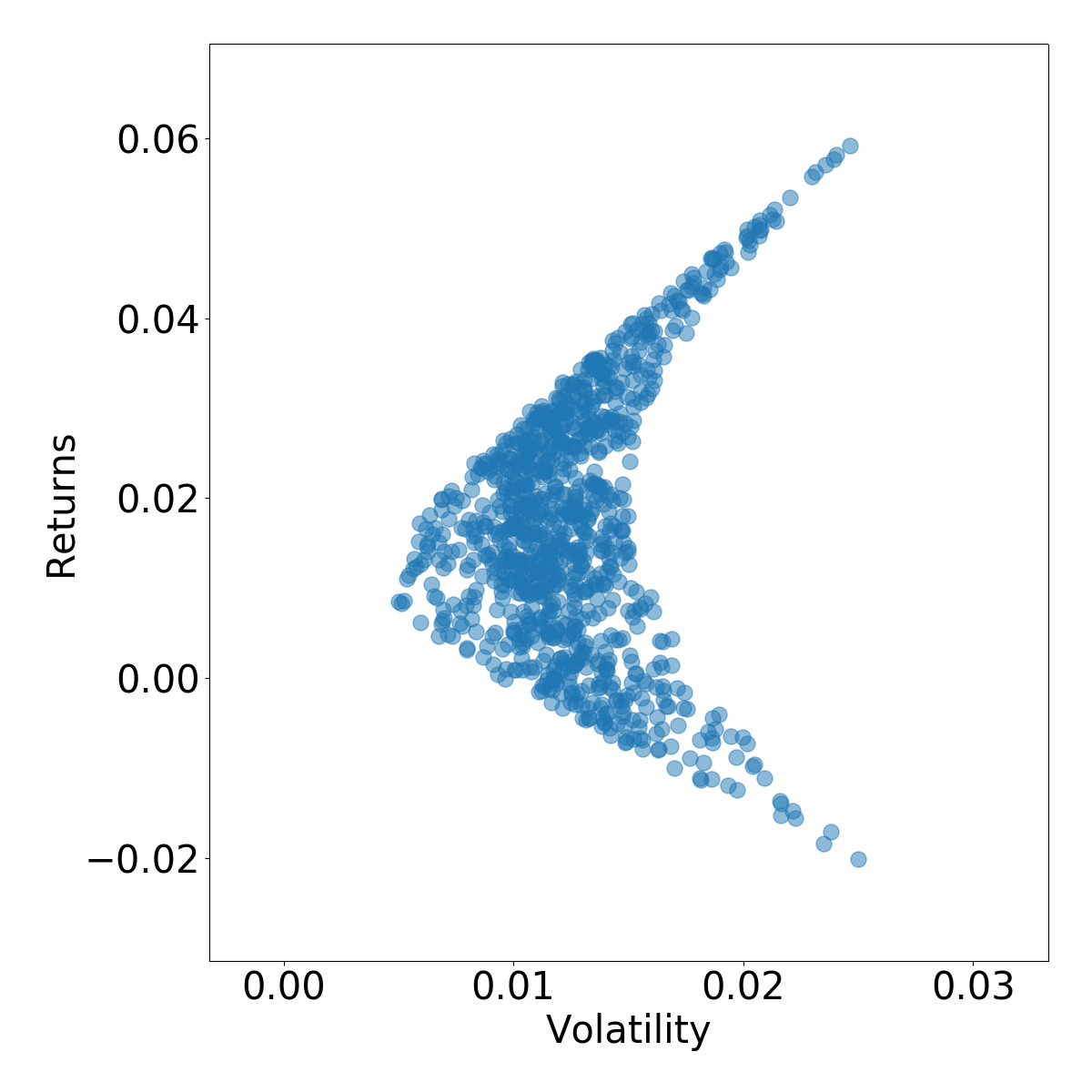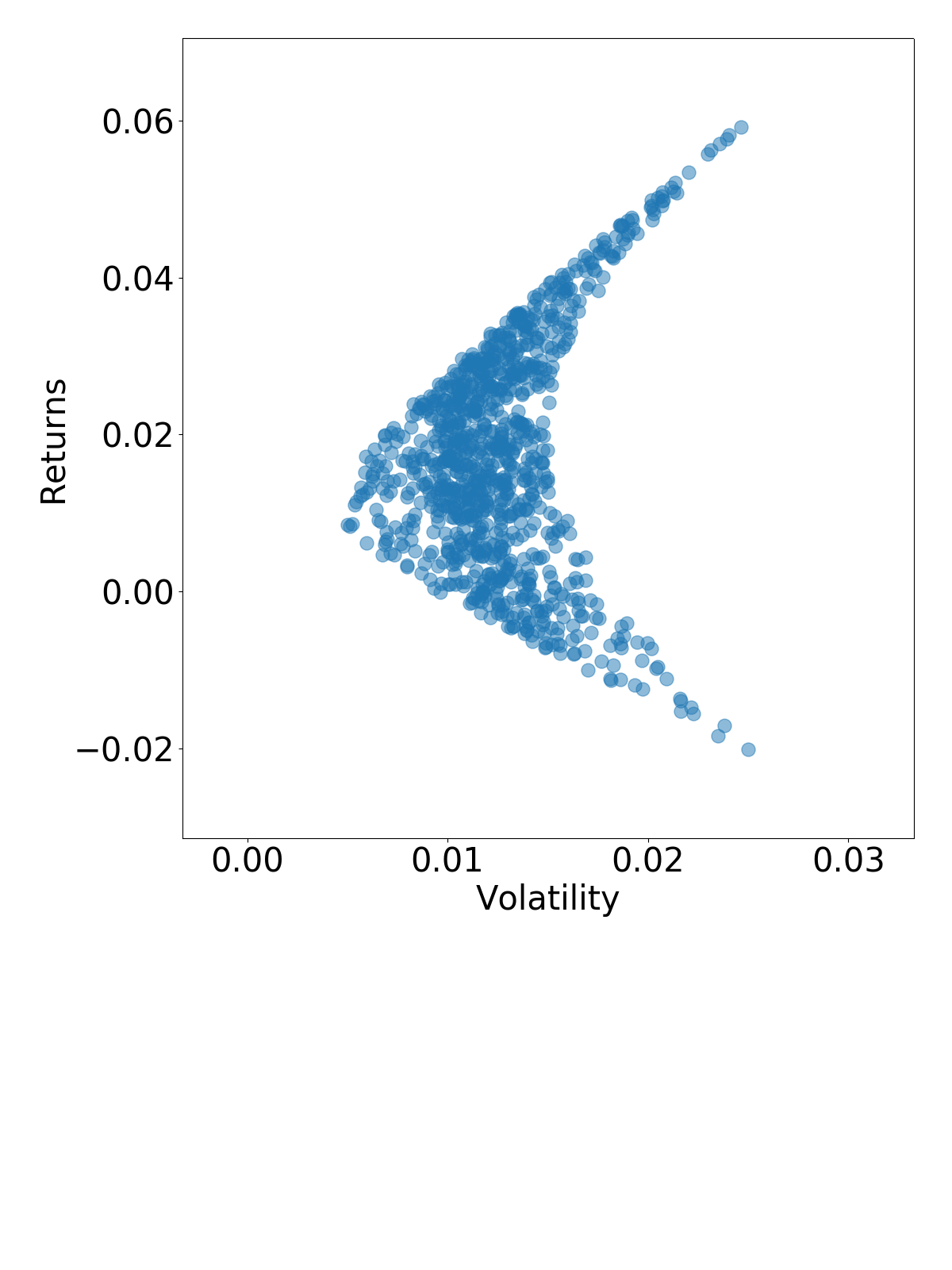Modern portfolio theory (MPT); efficient frontiers
Machine Learning for Finance in Python

Nathan George
Data Science Professor

Joining data
stocks = ['AMD', 'CHK', 'QQQ']
full_df = pd.concat([amd_df, chk_df, qqq_df], axis=1).dropna()
full_df.head()
AMD CHK QQQ
Date
1999-03-10 8.690 0.904417 45.479603
1999-03-11 8.500 0.951617 45.702324
1999-03-12 8.250 0.951617 44.588720
1999-03-15 8.155 0.951617 45.880501
1999-03-16 8.500 0.951617 46.281398
# calculate daily returns of stocks
returns_daily = full_df.pct_change()
# resample the full dataframe to monthly timeframe
monthly_df = full_df.resample('BMS').first()
# calculate monthly returns of the stocks
returns_monthly = monthly_df.pct_change().dropna()
print(returns_monthly.tail())
AMD CHK QQQ
Date
2018-01-01 0.023299 0.002445 0.028022
2018-02-01 0.206740 -0.156098 0.059751
2018-03-01 -0.101887 -0.190751 -0.020719
2018-04-02 -0.199160 0.060714 -0.052971
2018-05-01 0.167891 0.003367 0.046749
Covariances
# daily covariance of stocks (for each monthly period)
covariances = {}
for i in returns_monthly.index:
rtd_idx = returns_daily.index
# mask daily returns for each month (and year) & calculate covariance
mask = (rtd_idx.month == i.month) & (rtd_idx.year == i.year)
covariances[i] = returns_daily[mask].cov()
print(covariances[i])
AMD CHK QQQ
AMD 0.000257 0.000177 0.000068
CHK 0.000177 0.002057 0.000108
QQQ 0.000068 0.000108 0.000051
Generating portfolio weights
for date in covariances.keys():
cov = covariances[date]
for single_portfolio in range(5000):
weights = np.random.random(3)
weights /= np.sum(weights)
Calculating returns and volatility
portfolio_returns, portfolio_volatility, portfolio_weights = {},{},{} # get portfolio performances at each month for date in covariances.keys(): cov = covariances[date] for single_portfolio in range(5000): weights = np.random.random(3) weights /= np.sum(weights)returns = np.dot(weights, returns_monthly.loc[date]) volatility = np.sqrt(np.dot(weights.T, np.dot(cov, weights)))portfolio_returns.setdefault(date, []).append(returns) portfolio_volatility.setdefault(date, []).append(volatility) portfolio_weights.setdefault(date, []).append(weights)
Plotting the efficient frontier
date = sorted(covariances.keys())[-1]
# plot efficient frontier
plt.scatter(x=portfolio_volatility[date],
y=portfolio_returns[date],
alpha=0.5)
plt.xlabel('Volatility')
plt.ylabel('Returns')
plt.show()

Calculate MPT portfolios!
Machine Learning for Finance in Python

